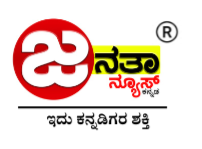Introduction
Ever found a perfect image online and wished you could stitch it onto fabric? With a PES file converter, that dream becomes reality. These tools bridge the gap between digital images and embroidered masterpieces by converting JPG, PNG, and other formats into PES files—the language your Brother embroidery machine understands.
In this guide, we’ll walk you through the entire process, from choosing the right converter to troubleshooting common issues. Whether you’re a beginner or a seasoned embroiderer, you’ll discover how to turn any image into a stunning stitched design.
Why Convert JPG to PES?
The Problem with JPGs
JPG files are great for photos but lack the stitch data embroidery machines need. Unlike PES files, which contain precise instructions for thread paths and colors, JPGs are just pixels. That’s where a PES file converter steps in—it digitizes the image, translating colors and shapes into stitches.
Benefits of Conversion
- Unlock Custom Designs – Stitch anything from logos to family photos.
- Save Money – Avoid paying for pre-digitized designs.
- Edit Freely – Adjust size, colors, and stitch density before stitching.
How a PES File Converter Works
The Conversion Process
- Upload Your Image – Drag and drop a JPG or PNG into the converter.
- Digitize the Design – Software analyzes colors and shapes, mapping them to stitches.
- Fine-Tune (Optional) – Edit stitch types, density, or thread colors.
- Export as PES – Save the file in Brother-compatible format.
Auto vs. Manual Digitizing
- Auto-Digitizing – Fast but less precise; best for simple designs.
- Manual Digitizing – Time-consuming but ideal for complex artwork.
Top Tools to Convert JPG to PES
1. SewArt
- Best for: Beginners and hobbyists
- Pros: Affordable, easy-to-use, decent auto-digitizing
- Cons: Limited manual editing
- Price: $79
2. Embird Studio
- Best for: Professionals needing full control
- Pros: Advanced editing, supports 60+ formats
- Cons: Steep learning curve
- Price: $259
3. Brother PE-Design
- Best for: Brother machine owners
- Pros: Optimized for PES, includes design tools
- Cons: Expensive
- Price: $500+
4. InkStitch (Free)
- Best for: Tech-savvy users
- Pros: Free, open-source, works with Inkscape
- Cons: Requires manual digitizing skills
- Price: Free
5. OnlineConvertFree
- Best for: Quick, no-software conversions
- Pros: Free, no installation
- Cons: Limited file size, less accurate
- Price: Free
Step-by-Step: Converting JPG to PES
Using SewArt (Auto-Digitizing)
- Import the Image – Open SewArt and load your JPG.
- Adjust Settings – Select stitch type (satin, fill) and simplify complex areas.
- Preview & Edit – Check for gaps or misplaced stitches.
- Export as PES – Save and transfer to your machine.
Using InkStitch (Manual Digitizing)
- Trace the Image – Use Inkscape’s tools to outline shapes.
- Assign Stitch Types – Define fill stitches for solid areas, satin for borders.
- Generate Stitch File – Let InkStitch convert paths to stitches.
- Export as PES – Load onto your Brother machine.
Common Problems & Fixes
1. Blurry or Pixelated Results
- Cause: Low-resolution JPG.
- Fix: Use high-quality images (300+ DPI).
2. Too Many Stitches
- Cause: Auto-digitizers overcomplicate details.
- Fix: Simplify the design or reduce stitch density.
3. Color Mismatches
- Cause: Converter misinterprets shades.
- Fix: Manually adjust thread colors before exporting.
4. Gaps in Stitching
- Cause: Poor digitizing of edges.
- Fix: Add underlay stitches or adjust pull compensation.
Pro Tips for Better Conversions
- Start Simple – Begin with bold, high-contrast images (e.g., logos).
- Clean Up the Image – Remove backgrounds and noise in Photoshop first.
- Test Stitch – Run a small sample to check thread tension and coverage.
- Use Vector Files – SVG or PNG with transparent backgrounds digitize cleaner than JPGs.
When to Hire a Digitizing Service
If you’re struggling with:
- Complex artwork (e.g., portraits, gradients)
- Time constraints (manual digitizing takes hours)
- Commercial projects (needing flawless quality)
Services like Digitizing Made Easy or Embird’s outsourcing can convert JPG to PES professionally for 10–10–50 per design.
Conclusion
Turning a JPG into an embroidered design is no longer magic—it’s just a PES file converter away. Whether you auto-digitize with SewArt or fine-tune manually in InkStitch, the right tool lets you stitch anything imaginable.
Remember: Start with high-quality images, tweak settings for cleaner stitches, and don’t shy away from professional help for intricate designs. Now, grab that favorite photo and transform it into your next embroidery masterpiece!


